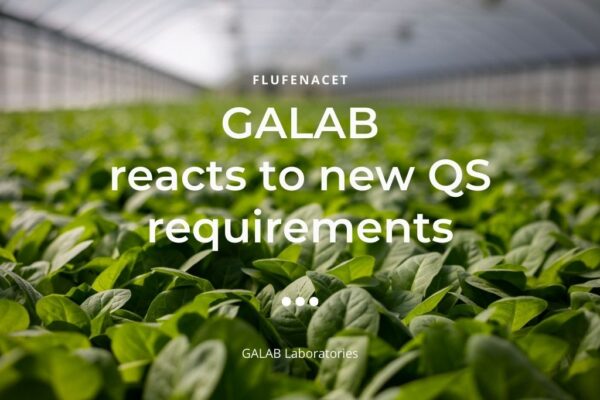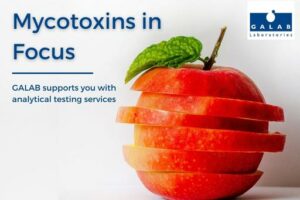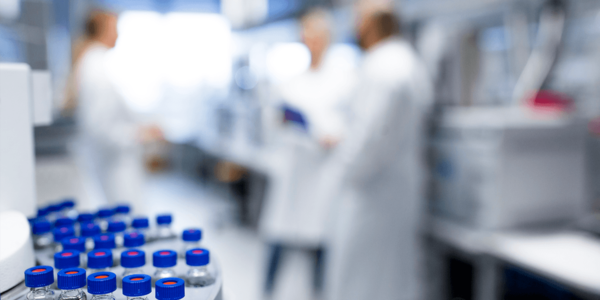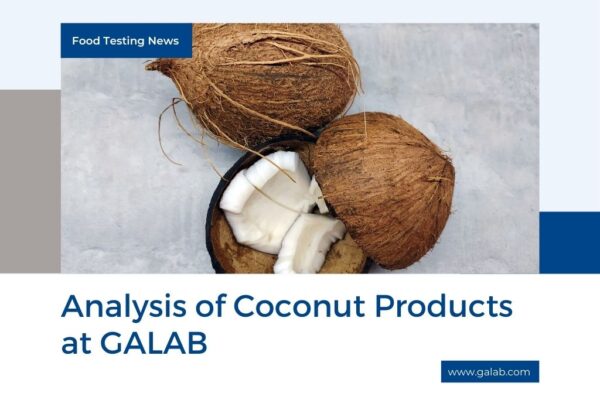Ergosterol

Ergosterol - A marker substance for monitoring mold infestation in food
The quality and safety of food are at the centre of food analysis. Plant-based foods are particularly susceptible to microbial spoilage, especially by moulds, which can form potentially harmful mycotoxins. A precise and efficient way to identify mold infestation at an early stage is to determine the ergosterol content. As a marker substance for mould fungi, ergosterol can provide indications of possible contamination even before complex mycotoxin analysis becomes necessary. GALAB offers a state-of-the-art method for the determination of ergosterol that delivers fast and reliable results.
What is ergosterol and where does it occur?
Ergosterol belongs to the chemical group of sterols, which act as natural components in cell membranes. While cholesterol plays a central role in animal cell membranes, ergosterol fulfils a comparable function in fungi and yeasts. It regulates the permeability and fluidity of the cell membrane and is therefore essential for the survival of these microorganisms.
As ergosterol occurs exclusively in fungi and yeasts, it is suitable as a reliable marker substance for the identification of these organisms. Molds in particular are of great importance as they cause spoilage of plant-based foods and can produce mycotoxins that are harmful to health.
Which food types and industries are affected?
Mold infestation is a major problem in the food industry, especially in plant-based products. Ergosterol analyses are particularly relevant in the following product groups:
- Tomatoes and tomato products: Especially in industrially manufactured products such as tomato juice or tomato paste, an ergosterol analysis can provide evidence of mold infestation.
- Other processed plant foods: Canned vegetables, fruit juices or cereal products can be affected by mold.
- Not suitable for fermented foods: Products with deliberate noble mold such as Camembert or fine salami naturally contain ergosterol and are therefore not suitable for such an analysis.
The analysis of ergosterol helps manufacturers and quality managers to detect potential mold contamination in the end product or in raw materials at an early stage, thereby ensuring consumer protection and product safety.
Why is ergosterol important as a marker substance?
Ergosterol itself does not pose a direct health risk. However, its relevance arises from the fact that it serves as a biological marker for the presence of mold fungi.
- If no ergosterol is detectable, there is no evidence of mold.
- If molds are not present, no mycotoxins are to be expected.
- If ergosterol levels are elevated, a mycotoxin analysis may be necessary to assess a potential health risk.
As many mycotoxins have a toxic effect and can cause long-term damage to health, preventive detection of ergosterol is of great importance.
Why should customers have Ergosterol analysed by GALAB?
Ergosterol analyses are an efficient screening method for identifying possible mold infestation in food at an early stage before complex and cost-intensive mycotoxin analyses or time-consuming microbiological tests have to be carried out.
The determination of ergosterol is of particular regulatory importance in the tomato industry. The A.I.J.N. (European Fruit Juice Association) has set a limit value of 0.76 mg/L for tomato juice. Exceeding this value can be an indicator of inadequate quality or hygienic deficiencies in the production process.
Further reasons for an ergosterol analysis at GALAB:
✔ Preventive consumer protection – food contaminated with mold can be detected at an early stage and removed from circulation.
✔ Effective quality control – by regularly testing raw materials, manufacturers can optimise their product quality.
✔ Reliable screening method – A cost-effective alternative to direct mycotoxin analysis.
How does GALAB analyse Ergosterol?
GALAB relies on a highly modern and rapid analysis method using GC-MS/MS (gas chromatography coupled with tandem mass spectrometry). This method enables
- A low limit of quantification of 0.01 mg/kg in food, which means that even the smallest amounts of ergosterol can be reliably detected.
- Precise and fast results to efficiently support quality managers in risk assessment.
- High sensitivity and specificity to reliably detect mould contamination in a wide range of foods.
Thanks to this advanced technology, GALAB provides its customers with reliable analysis results that provide a sound basis for decision-making in quality assurance and consumer protection.
FAQ: Ergosterol and its importance in food analysis
❓ What is ergosterol and why is it relevant?
✔ Ergosterol is a sterol that is found exclusively in fungi and yeasts.
✔ It serves as a biological marker to detect the presence of moulds in food.
❓ In which products is an ergosterol analysis particularly useful?
✔ In tomato products (e.g. tomato juice, tomato paste, tomato sauce), as regulatory limits apply here.
✔ In processed plant-based foods such as tinned vegetables, fruit juices or cereal products.
✔ Not suitable for fermented foods with deliberate noble mould (e.g. Camembert, noble salami).
❓ Does ergosterol pose a health risk?
✔ No, ergosterol itself is not toxic.
✔ However, its detection can indicate mould infestation, which can be associated with harmful mycotoxins.
❓ Why is ergosterol a useful screening tool?
✔ If no ergosterol is detectable, there is no mould contamination.
✔ An ergosterol analysis is a cost-effective alternative to direct mycotoxin analysis.
❓ How exactly does GALAB analyse ergosterol?
✔ Using GC-MS/MS, a state-of-the-art method with an extremely low detection limit of 0.01 mg/kg.
✔ Precise, fast and reliable analyses for sound quality assurance.
Conclusion: ergosterol as the key to food safety
Analysing ergosterol is an essential part of quality control in food production. As a marker substance for moulds, it enables early identification of contamination before mycotoxins become a problem. Using state-of-the-art GC-MS/MS technology, GALAB offers a reliable and highly sensitive method for the determination of ergosterol – for maximum safety and quality in the food industry.
Ensure the quality of your products with a precise ergosterol analysis – we will be happy to advise you!
Parameters & Analytical Methods
-
State-of-the-Art Analysis
We constantly update our spectrum of parameters to the latest developments in the food analysis sector and offer state-of-the-art analytical methods for the safety of your products.
-
Comprehensive multi-methods
We are constantly expanding our range of services in order to be able to guarantee you a comprehensive range of analyses. We offer multi-methods for mycotoxins, dioxin analysis or molecular biological analysis for GMOs and allergens. The GALAB Pesticide500Plus® multi-method can even be used for difficult matrices such as spices and herbs.
-
Constant development
If you cannot find the parameter/analysis you are looking for here, please do not hesitate to contact us. Our research and development department implements your requirements and specifications cost-efficiently and with a high quality standard.
-
Quality Policy
GALAB Laboratories has implemented a quality management system to allow for optimum service for their customers. It is our goal to establish close relations to customers by customer satisfaction. Therefor quick reactions to customers’ specific needs as well as considerations for quality demands of the market are necessary. We strive to provide comprehensive and professional advice to our customers. Learn more
Get in touch, we will help you.






